Sensing Archaeology in the North: The Use of Non-Destructive Geophysical and Remote Sensing Methods in Archaeology in Scandinavian and North Atlantic Territories
Abstract
1. Introduction
2. The Sensing Archaeology in the North Workshop
3. Workshop Presentations and Special Issue Papers
4. Roundtable Discussion
4.1. Aerial/Remote Sensing Methods
4.1.1. Current Application
4.1.2. Challenges and Way Forward
4.2. Ground-Based Geophysical Methods
4.2.1. Current Application
4.2.2. Challenges
4.2.3. Way Forward
4.3. Marine Sensing Methods
4.3.1. Current Application
4.3.2. Challenges and Way Forward
5. Conclusions
Supplementary Materials
Author Contributions
Funding
Acknowledgments
Conflicts of Interest
References
- Campana, S.; Piro, S. Seeing the Unseen. Geophysics and Landscape Archaeology; Taylor & Francis: London, UK, 2009; p. 376. [Google Scholar]
- Sarris, A. Best Practices of Geoinformatic Technologies for the Mapping of Archaeolandscapes; Archaeopress: Oxford, UK, 2015; p. 269. [Google Scholar]
- ArchaeoLandscapes Europe. Available online: http://www.arcland.eu (accessed on 14 August 2020).
- COST Action SAGA. Available online: https://www.saga-cost.eu (accessed on 14 August 2020).
- Europe’s Lost Frontiers. Available online: https://lostfrontiers.teamapp.com (accessed on 14 August 2020).
- Bollandsås, O.; Risbøl, O.; Ene, L.; Nesbakken, A.; Gobakken, T.; Næsset, E. Using airborne small-footprint laser scanner data for detection of cultural remains in forests: An experimental study of the effects of pulse density and DTM smoothing. J. Archaeol. Sci. 2012, 39, 2733–2743. [Google Scholar] [CrossRef]
- Risbøl, O.; Bollandsås, O.M.; Nesbakken, A.; Ørka, H.O.; Næsset, E.; Gobakken, T. Interpreting cultural remains in airborne laser scanning generated digital terrain models: Effects of size and shape on detection success rates. J. Archaeol. Sci. 2013, 40, 4688–4700. [Google Scholar] [CrossRef]
- Risbøl, O.; Langhammer, D.; Mauritsen, E.S.; Seitsonen, O. Employment, Utilization, and Development of Airborne Laser Scanning in Fenno-Scandinavian Archaeology—A Review. Remote Sens. 2020, 12, 1411. [Google Scholar] [CrossRef]
- Chase, A.F.; Chase, D.Z.; Awe, J.J.; Weishampel, J.F.; Iannone, G.; Moyes, H.; Yaeger, J.; Brown, M.K.; Shrestha, R.L.; Carter, W.E.; et al. Ancient Maya regional settlement and inter-site analysis: The 2013 west-central Belize LiDAR survey. Remote Sens. 2014, 6, 8671–8695. [Google Scholar] [CrossRef]
- Evans, D. Airborne laser scanning as a method for exploring long-term socio-ecological dynamics in Cambodia. J. Archaeol. Sci. 2016, 74, 164–175. [Google Scholar] [CrossRef]
- Olesen, L.H. An aerial view of the past—Aerial archaeology in Denmark 275. In Remote Sensing for Archaeological Heritage Management; EAC Occasional Paper No.5; David, C.C., Ed.; Archaeolingua: Budapest, Hungary, 2011; pp. 275–282. [Google Scholar]
- Olesen, L.H.; Mauritsen, E.S.; Broch, M. Luftfotoarkæologi 2: Luftfotos, Droner, Laser Og Geofysik; Holsterbro Museum: Holsterbro, Denmark, 2019. [Google Scholar]
- Laulumaa, V.; Koivisto, S. From Conventions to Convictions or to Cooperation? Cultural Heritage and Forestry in Finland. In Collision or Collaboration; Springer: Berlin, Germany, 2017; pp. 61–76. [Google Scholar]
- Tevali, R. Matalan veden arkeologiaa: Menetelmiä rannoille ja ruovikoille. In Monttu Auki; Niukkanen, M., Pesonen, P., Alvik, R., Eds.; Uutta vanhaa Kulttuuriperinnöstä, Museovirasto: Helsinki, Finland, 2016. [Google Scholar]
- Koivisto, S. Archaeology of Finnish Wetlands: With Special Reference to Studies of Stone Age Stationary Wooden Fishing Structures. Ph.D. Thesis, University of Helsinki, Helsinki, Finland, 2017. [Google Scholar]
- Koivisto, S.; Latvakoski, N.; Perttola, W. Out of the peat: Preliminary geophysical prospection and evaluation of the mid-Holocene stationary wooden fishing structures in Haapajärvi, Finland. J. Field Archaeol. 2018, 43, 166–180. [Google Scholar] [CrossRef]
- Koivisto, S. Tietolaatikko: Hukkuneen kivikauden jäljillä eteläisellä Saimaalla. In Rajamaa; Jyrki, P., Anu, T., Eds.; Edita Publishing: Helsinki, Finland, 2018; pp. 88–89. [Google Scholar]
- Jones, R.; Sharpe, L. Going Over Old Ground: Perspectives on Archaeological Geophysical and Geochemical Survey in Scotland: Proceedings of a Conference Held at the Department of Archaeology, University of Glasgow, Scotland, August 2003; BAR British Series; Archaeopress: Oxford, UK, 2006; Volume 416. [Google Scholar]
- O’Grady, O. A role for geophysics in Scottish developer-funded archaeology? Archaeologist 2009, 71, 15. [Google Scholar]
- Milek, K.; Jones, R. Science in Scottish Archaeology; Technical Report; Scottish Archaeological Research Framework (ScARF): Edinburgh, UK, 2012; p. 184. [Google Scholar]
- Sharpe, L. Geophysical, Geochemical and Arable Crop Responses to Archaeological Sites in the Upper Clyde Valley, Scotland. Ph.D. Thesis, University of Glasgow, Glasgow, UK, 2004. [Google Scholar]
- Maričević, D. Later Prehistory of Tiree and Coll, Inner Hebrides, Scotland: Application of Geophysics in Archaeological Investigation of Cultural Landscapes. Ph.D. Thesis, University of Reading, Reading, UK, 2010. [Google Scholar]
- Cuenca-García, C. The Interface of Geophysical and Geochemical Survey at Scottish Archaeological Sites: Exploring the Potential of An Integrated Approach for Archaeological Prospection. Ph.D. Thesis, University of Glasgow, Glasgow, UK, 2013. [Google Scholar]
- Clarke, C.; Utsi, E.; Utsi, V. Ground penetrating radar investigations at North Ballachulish Moss, Highland, Scotland. Archaeol. Prospect. 1999, 6, 107–121. [Google Scholar] [CrossRef]
- Ovenden, S.; Gater, J.; Saunders, M. Ten years on: Geophysical survey on the ‘Heart of Neolithic Orkney’ World Heritage Area. ArcheoSciences 2009, 33, 125–127. [Google Scholar] [CrossRef]
- Jones, R.; Challands, A.; French, C.; Card, N.; Downes, J.; Richards, C. Exploring the location and function of a Late Neolithic house at Crossiecrown, Orkney by geophysical, geochemical and soil micromorphological methods. Archaeol. Prospect. 2010, 17, 29–47. [Google Scholar] [CrossRef]
- Cuenca-García, C.; Hall, A.; Jones, R.; Poller, T. From the air to the atomic level of a ditch:integrating geophysical and geochemical survey methods at the prehistoric cropmark complex of Forteviot (Perthshire, Scotland). In Proceedings of the 10th International Conference on Archaeological Prospection (AP2013), Vienna, Austria, 29 May–2 June 2013; Neubauer, W., Trinks, I., Salisbury, R., Einwögerer, C., Eds.; Verlag der Österreichischen Akademie der Wissenschaften: Wien, Austria, 2013; pp. 129–133. [Google Scholar] [CrossRef]
- Bishop, P.; Cuenca-García, C.; Jones, R.; Cook, D. Lime burning in clamp kilns in Scotland’s western central belt: Primitive industry or simple but perfectly adequate technology? Ind. Archaeol. Rev. 2017, 39, 38–58. [Google Scholar] [CrossRef]
- Hanson, W.; Jones, R.; Jones, R. The Roman military presence at Dalswinton, Dumfriesshire: A reassessment of the evidence from aerial, geophysical and LiDAR survey. Britannia 2019, 50, 285–320. [Google Scholar] [CrossRef]
- Cuenca-García, C. Soil geochemical methods in archaeo-geophysics: Exploring a combined approach at sites in Scotland. Archaeol. Prospect. 2019, 26, 57–72. [Google Scholar] [CrossRef]
- Bates, C.; Bates, M.; Dawson, S.; Huws, D.; Whittaker, J.; Wickham-Jones, C. The environmental context of the Neolithic monuments on the Brodgar Isthmus, Mainland, Orkney. J. Archaeol. Sci. Rep. 2016, 7, 394–407. [Google Scholar] [CrossRef]
- Bates, C.R.; Bates, M.; Gaffney, C.; Gaffney, V.; Raub, T.D. Geophysical Investigation of the Neolithic Calanais Landscape. Remote Sens. 2019, 11, 2975. [Google Scholar] [CrossRef]
- Olesen, M.; Rassman, C. udgravning. In Luftfotoarkæologi 2–Luftfotos, Droner, Laser og Geofysik; Olesen, L., Mauritsen, E., Broch, M., Eds.; Holstebro Museum: Holstebro, Denmark, 2019. [Google Scholar]
- Viberg, A.; Trinks, I.; Lidén, K. A review of the use of geophysical archaeological prospection in Sweden. Archaeol. Prospect. 2011, 18, 43–56. [Google Scholar] [CrossRef]
- Viberg, A. Remnant Echoes of the Past: Archaeological Geophysical Prospection in Sweden. Ph.D. Thesis, Stockholm University, Stockholm, Sweden, 2012. [Google Scholar]
- Viberg, A.; Gustafsson, C.; Andrén, A. Multi-Channel Ground-Penetrating Radar Array Surveys of the Iron Age and Medieval Ringfort Bårby on the Island of Öland, Sweden. Remote Sens. 2020, 12, 227. [Google Scholar] [CrossRef]
- Stamnes, A. The Application of Geophysical Methods in Norwegian Archaeology: A Study of the Status, Role and Potential of Geophysical Methods in Norwegian Archaeological Research and Cultural Heritage Management. Ph.D. Thesis, Norwegian University of Science and Technology (NTNU), Trondheim, Norway, 2016. [Google Scholar]
- Gustavsen, L.; Stamnes, A.A.; Fretheim, S.E.; Gjerpe, L.E.; Nau, E. The Effectiveness of Large-Scale, High-Resolution Ground-Penetrating Radar Surveys and Trial Trenching for Archaeological Site Evaluations—A Comparative Study from Two Sites in Norway. Remote Sens. 2020, 12, 1408. [Google Scholar] [CrossRef]
- Bühler, Y.; Stoffel, A.; Adams, M.; BÖSCH, R.; Ginzler, C. UAS photogrammetry of homogenous snow cover. Proc. DreilÄNdertagung 2016, 7, 306–316. [Google Scholar]
- Solem, D.; Nau, E. Two New Ways of Documenting Miniature Incisions Using a Combination of Image-Based Modelling and Reflectance Transformation Imaging. Remote Sens. 2020, 12, 1626. [Google Scholar] [CrossRef]
- Miles, J.; Pitts, M.; Pagi, H.; Earl, G. New applications of photogrammetry and reflectance transformation imaging to an Easter Island statue. Antiquity 2014, 88, 596–605. [Google Scholar] [CrossRef]
- Porter, S.T.; Huber, N.; Hoyer, C.; Floss, H. Portable and low-cost solutions to the imaging of Paleolithic art objects: A comparison of photogrammetry and reflectance transformation imaging. J. Archaeol. Sci. Rep. 2016, 10, 859–863. [Google Scholar] [CrossRef]
- Caine, M.; Maggen, M.; Altaratz, D. Combining RTI & SFM. A Multi-Faceted Approach to Inscription Analysis. In Electronic Imaging & the Visual Arts. EVA 2019 Florence; Cappellini, V., Ed.; Firenze University Press: Florence, Italy, 2019. [Google Scholar] [CrossRef]
- Gabler, M.; Trinks, I.; Nau, E.; Hinterleitner, A.; Paasche, K.; Gustavsen, L.; Kristiansen, M.; Tonning, C.; Schneidhofer, P.; Kucera, M.; et al. Archaeological Prospection with Motorised Multichannel Ground-Penetrating Radar Arrays on Snow-Covered Areas in Norway. Remote Sens. 2019, 11, 2485. [Google Scholar] [CrossRef]
- Ødegård, Ø. Towards Autonomous Operations and Systems in Marine Archaeology. Ph.D. Thesis, Norwegian University of Science and Technology (NTNU), Trondheim, Norway, 2018. [Google Scholar]
- Ødegård, Ø.; Hansen, R.E.; Singh, H.; Maarleveld, T.J. Archaeological use of Synthetic Aperture Sonar on deep-water wreck sites in Skagerrak. J. Archaeol. Sci. 2018, 89, 1–13. [Google Scholar] [CrossRef]
- Ødegård, Ø.; Mogstad, A.A.; Johnsen, G.; Sørensen, A.J.; Ludvigsen, M. Underwater hyperspectral imaging: A new tool for marine archaeology. Appl. Opt. 2018, 57, 3214–3223. [Google Scholar] [CrossRef]
- Mogstad, A.A.; Ødegård, Ø.; Nornes, S.M.; Ludvigsen, M.; Johnsen, G.; Sørensen, A.J.; Berge, J. Mapping the Historical Shipwreck Figaro in the High Arctic Using Underwater Sensor-Carrying Robots. Remote Sens. 2020, 12, 997. [Google Scholar] [CrossRef]
- Marstrander, S. Kong Øysteins havn på Agdenes. In Trondhjemske Samlinger. Række 3. Bind 2; Trondhjems Historiske Forening: Trondheim, Norway, 1967; pp. 263–271. [Google Scholar]
- Meyer, J. Civilingeniør J Meyers Indberetning om den gamle Havn og Molo ved Agdenes. Aarsberetning for Foreningen til Norske Fortidsmindesmerkers Bevaring 1896. In Kristiania; Tangen Grafiske Senter AS: Drammen, Norway, 1869; pp. 6–10. [Google Scholar]
- Jasinski, M. Kong Øysteins havn på Agdenes. Forskningstatus og revurderte problemstillinger. In Viking; Ministry of Climate and Environment: Oslo, Norway, 1995; pp. 73–104. [Google Scholar]
- Tuddenham, D.; Skoglund, F. King Øystein’s harbour revisited. In IKUWA 3: Beyond Boundaries, Proceedings of the 3rd International Congress on Underwater Archaeology; London, UK, 9–12 July 2008, Henderson, J., Ed.; Rudolf Habelt GmbH: Bonn, Germany, 2012; Volum 17 av Kolloquien zur Vor- und Frühgeschichte, pp. 316–318. [Google Scholar]
- Wilken, D.; Wunderlich, T.; Feldens, P.; Coolen, J.; Preston, J.; Mehler, N. Investigating the Norse Harbour of Igaliku (Southern Greenland) Using an Integrated System of Side-Scan Sonar and High-Resolution Reflection Seismics. Remote Sens. 2019, 11, 1889. [Google Scholar] [CrossRef]
- Risbøl, O. Neglected Cultural Heritage in Norwegian Forests—State of Affairs, Challenges and Solutions. Archaeol. Sites For. Strateg. Their Prot. 2017, 14, 25–31. [Google Scholar]
- Olesen, L.H. Luftfotoarkæologi i Danmark; Holstebro Museum: Holstebro, Denmark, 2015. [Google Scholar]
- Due Trier, Ø.; Pilø, L.H.; Johansen, H.M. Semi-automatic mapping of cultural heritage from airborne laser scanning data. Sémata Cienc. Sociais e Humanidades 2015, 27, 159–186. [Google Scholar]
- Kermit, M.; Trier, Ø.D. Towards a national infrastructure for semi-automatic mapping of cultural heritage in Norway. In Proceedings of the 44th Computer Applications and Quantitative Methods in Archaeology Conference (CAA 2016), Oslo, Norway, 29 March–2 April 2016. [Google Scholar]
- Risbøl, O. Cultivating the “wilderness”-how lidar can improve archaeological landscape understanding. In Interpreting Archaeological Topography: 3D Data, Visualisation and Observation; Opitz, R.S., Cowley, D.C., Eds.; Academia: Prague, Czech Republic, 2013; pp. 51–62. [Google Scholar]
- Chase, A.S.; Chase, D.Z.; Chase, A.F. LiDAR for archaeological research and the study of historical landscapes. In Sensing the Past; Springer: Berlin, Germany, 2017; pp. 89–100. [Google Scholar]
- Mlekuž, D. Airborne laser scanning and landscape archaeology. Opvscvla Archaeol. 2018, 39, 85–95. [Google Scholar] [CrossRef]
- Risbøl, O.; Gustavsen, L. LiDAR from drones employed for mapping archaeology–Potential, benefits and challenges. Archaeol. Prospect. 2018, 25, 329–338. [Google Scholar] [CrossRef]
- Duckers, G.L. Bridging the ‘geospatial divide’in archaeology: Community based interpretation of LIDAR data. Internet Archaeol 2013, 35. [Google Scholar]
- Seitsonen, O. Crowdsourcing cultural heritage: Public participation and conflict legacy in Finland. J. Community Archaeol. Herit. 2017, 4, 115–130. [Google Scholar] [CrossRef]
- Lambers, K.; Verschoof-van der Vaart, W.B.; Bourgeois, Q.P. Integrating remote sensing, machine learning, and citizen science in Dutch archaeological prospection. Remote Sens. 2019, 11, 794. [Google Scholar] [CrossRef]
- Scottish Office PAN42. Planning Advice Note. Archaeology. In The Planning Process and Scheduled Monument Procedures; Technical Report; Scottish Office: Edinburgh, UK, 1994. [Google Scholar]
- Klima- og MiljøDepartementet Meld. St. 16 (2019–2020), Melding til Stortinget: Nye mål i KulturmiljøPolitikken (Engasjement, BæRekraft og Mangfold) 2020; Technical Report; Ministry of Climate and Environment: Oslo, Norway, 2020.
- Schmidt, A.; Linford, P.; Linford, N.; David, A.; Gaffney, C.; Sarris, A.; Fassbinder, J. EAC Guidelines for the Use of Geophysics in Archaeology: Questions to Ask and Points to Consider; Europae Archaeologia Consilium (EAC): Oxford, UK, 2006. [Google Scholar]
- Cuenca-García, C.; Koivisto, S.; Perttola, W.; Viberg, A.; Fuglsang, M.; Stamnes, A. SAN Online Databases; SAN Network. 2020. Available online: https://zenodo.org/record/3941634#.X2ndPYu-tPY (accessed on 10 July 2020).
- Stamnes, A.; Gustavsen, L. Archaeological Use of Geophysical Methods in Norwegian Cultural Heritage Management—A Review. In A Sense of the Past. Studies in Current Archaeological Applications of Remote Sensing and Non-Invasive Prospection Methods; Kamermans, H., Gojda, M., Posluschny, A., Eds.; Archaeopress, BAR International: Oxford, UK, 2014; pp. 17–31. [Google Scholar]
- De Smedt, P.; Van Meirvenne, M.; Davies, N.S.; Bats, M.; Saey, T.; De Reu, J.; Meerschman, E.; Gelorini, V.; Zwertvaegher, A.; Antrop, M.; et al. A multidisciplinary approach to reconstructing Late Glacial and Early Holocene landscapes. J. Archaeol. Sci. 2013, 40, 1260–1267. [Google Scholar] [CrossRef]
- Donati, J.C.; Sarris, A.; Papadopoulos, N.; Kalaycı, T.; Simon, F.X.; Manataki, M.; Moffat, I.; Cuenca-García, C. A Regional Approach to Ancient Urban Studies in Greece Through Multi-Settlement Geophysical Survey. J. Field Archaeol. 2017, 42, 450–467. [Google Scholar] [CrossRef]
- Schneidhofer, P.; Nau, E.; Hinterleitner, A.; Lugmayr, A.; Bill, J.; Gansum, T.; Paasche, K.; Seren, S.; Neubauer, W.; Draganits, E.; et al. Palaeoenvironmental analysis of large-scale, high-resolution GPR and magnetometry data sets: The Viking Age site of Gokstad in Norway. Archaeol. Anthropol. Sci. 2017, 9, 1187–1213. [Google Scholar] [CrossRef]
- Cuenca-García, C.; Armstrong, K.; Aidona, E.; De Smedt, P.; Rosveare, A.; Rosveare, M.; Schneidhofer, P.; Wilson, C.; Faßbinder, J.; Moffat, I.; et al. The Soil science and Archaeo-Geophysics Alliance (SAGA): Going beyond prospection. Res. Ideas Outcomes 2018, 4, 25. [Google Scholar] [CrossRef]
- Armstrong, K.; Cheetham, P.; Darvill, T. Tales from the outer limits: Archaeological geophysical prospection in lowland peat environments in the British Isles. Archaeol. Prospect. 2019, 26, 91–101. [Google Scholar] [CrossRef]
- Dirix, K.; Muchez, P.; Degryse, P.; Music, B.; Poblome, J. Integrating geochemical survey and magnetic prospection on an archaeological site in SW-Turkey. Archaeological Prospection. In Proceedings of the 10th International Conference on Archaeological Prospection, Vienna, Austria, 29 May–2 June 2013; Neubauer, W., Trinks, I., Salisbury, R., Einwögerer, C., Eds.; Verlag der Österreichischen Akademie der Wissenschaften: Wien, Austria, 2013; pp. 110–113. [Google Scholar]
- Fry, R.; Gaffney, C.; Beck, A. The DART Project: A major new investigation into what lies beneath our soils. In Proceedings of the Archaeological Prospection: 9th international Conference on Archaelogical Prospection, Izmir, Turkey, 19–24 September 2011; Extended Abstracts. Drahor, M., Berge, M., Eds.; Archaeology and Art Publications: Izmir, Turkey, 2011; pp. 37–39. [Google Scholar]
- Schneidhofer, P.; Tonning, C.; Lia, V.; Baldersdottir, B.; Øhre Askjem, J.; Gustavsen, L.; Nau, E.; Kristiansen, M.; Trinks, I.; Gansum, T.; et al. Investigating the influence of seasonal changes on high-resolution GPR data: The Borre Monitoring Project. In Proceedings of the AP 2017 12th International Conference of Archaeological Prospection, Bradford, UK, 12–16 September 2017; Jennings, B., Gaffney, C., Sparrow, T., Gaffney, S., Eds.; Archaeopress Publishing Ltd.: Oxford, UK, 2017; pp. 224–226. [Google Scholar]
- Cuenca-García, C.; Perttola, W.; Koivisto, S.; Viberg, A.; Fulgsang, M. SAN Equipment Database; SAN Network; 2020. Available online: https://zenodo.org/record/3941571#.X2neOIu-tPY (accessed on 13 July 2020).
- Flemming, N.C.; Çağatay, M.N.; Chiocci, F.L.; Galanidou, N.; Jöns, H.; Lericolais, G.; Missiaen, T.; Moore, F.; Rosentau, A.; Sakellariou, D. Land Beneath the Waves: Submerged Landscapes and Sea Level Change: A Joint Geoscience-Humanities Strategy for European Continental Shelf Prehistoric Research; European Marine Board: Ostend, Belgium, 2014; Volume 21. [Google Scholar]
- Nilssen, I.; Ødegård, Ø; Sørensen, A.J.; Johnsen, G.; Moline, M.A.; Berge, J. Integrated environmental mapping and monitoring, a methodological approach to optimise knowledge gathering and sampling strategy. Mar. Pollut. Bull. 2015, 96, 374–383. [Google Scholar] [CrossRef]
- Revised Roadmap for the UN Decade of Ocean Science for Sustainable Development; Executive Council, 51st; Intergovernmental Oceanographic Comission (IOC): Paris, France, 2018.
- Trakadas, A.; Firth, A.; Gregory, D.; Elkin, D.; Guerin, U.; Henderson, J.; Kimura, J.; Scott-Ireton, D.; Shashoua, Y.; Underwood, C. The Ocean Decade Heritage Network: Integrating Cultural Heritage Within the UN Decade of Ocean Science 2021–2030. J. Marit. Archaeol. 2019, 14, 153–165. [Google Scholar] [CrossRef]
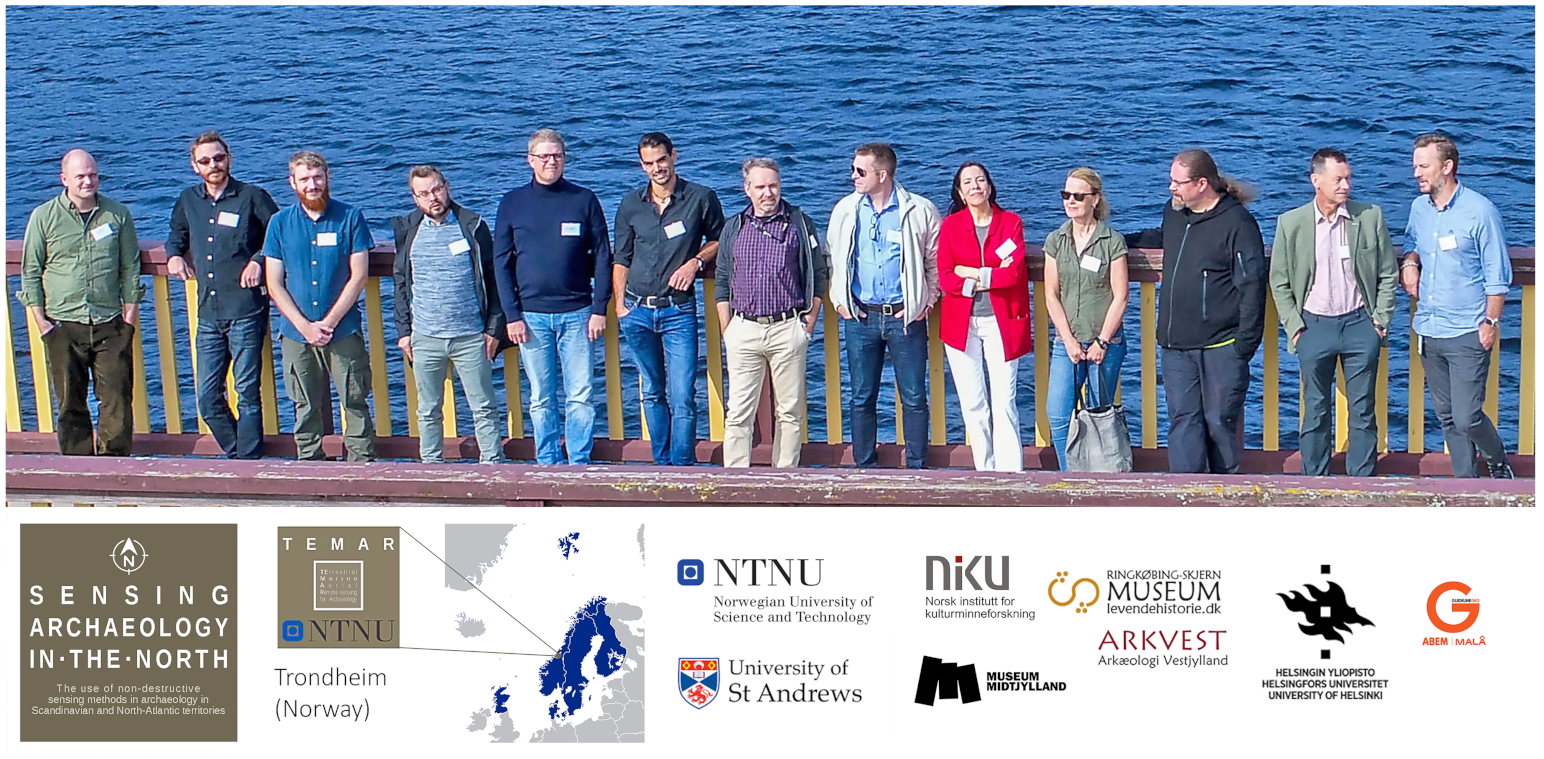

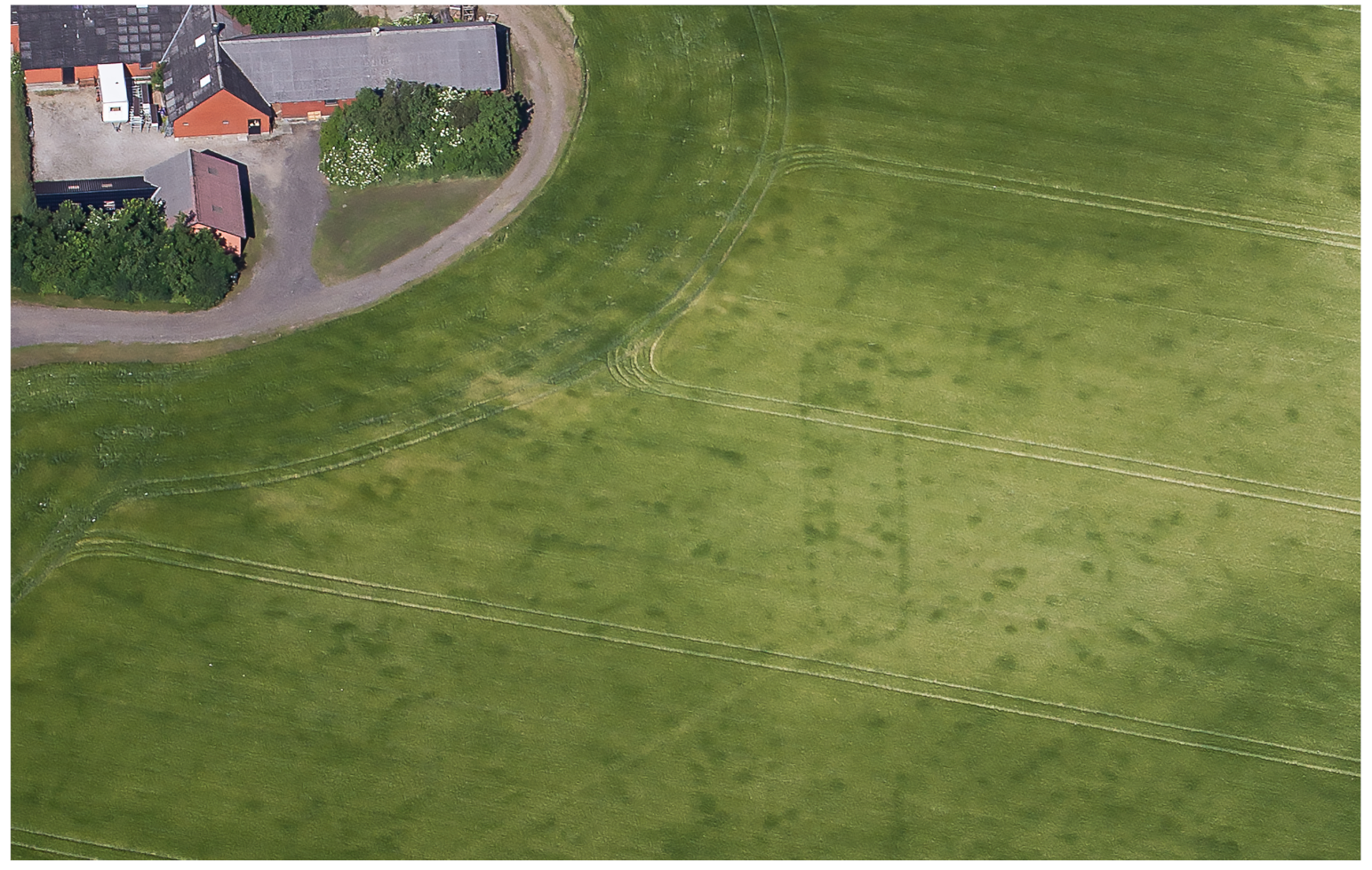
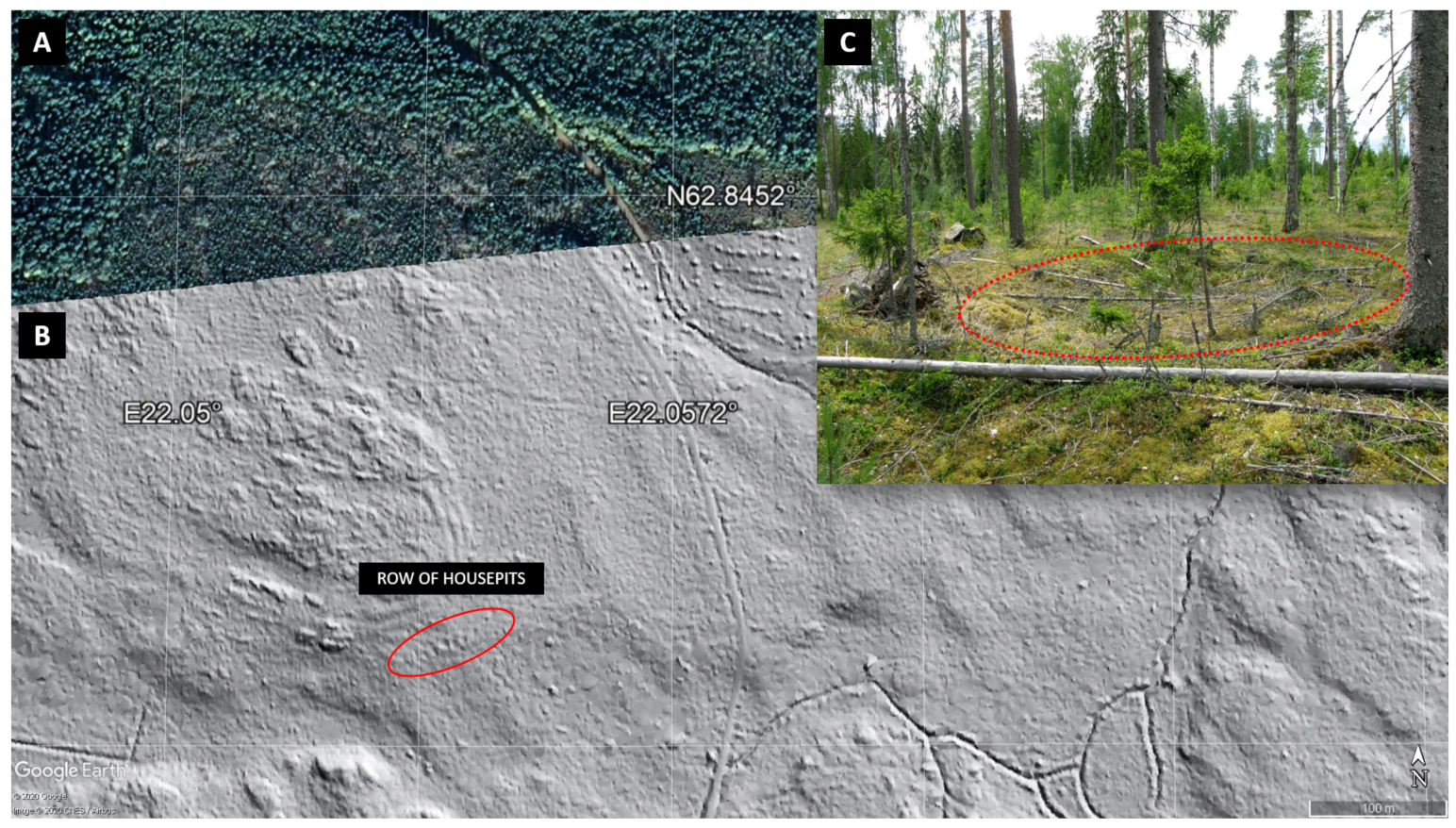
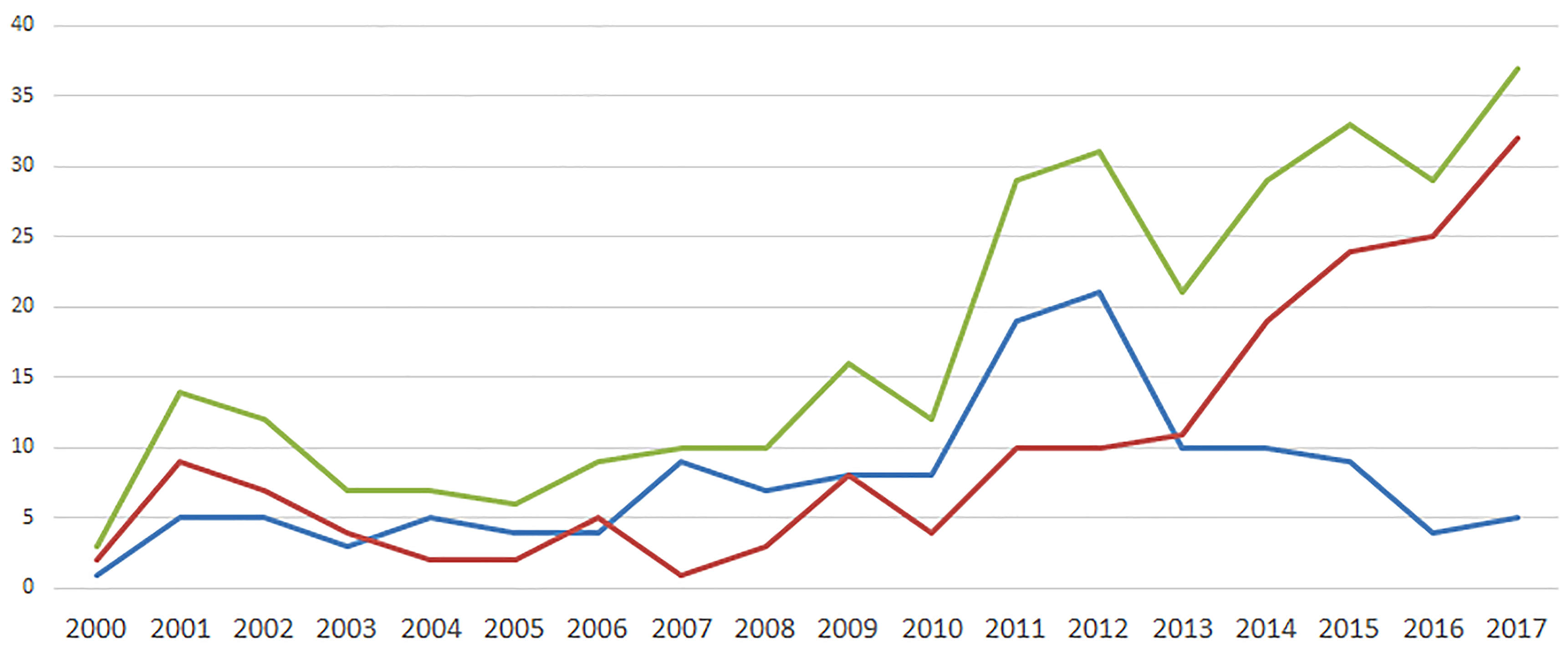
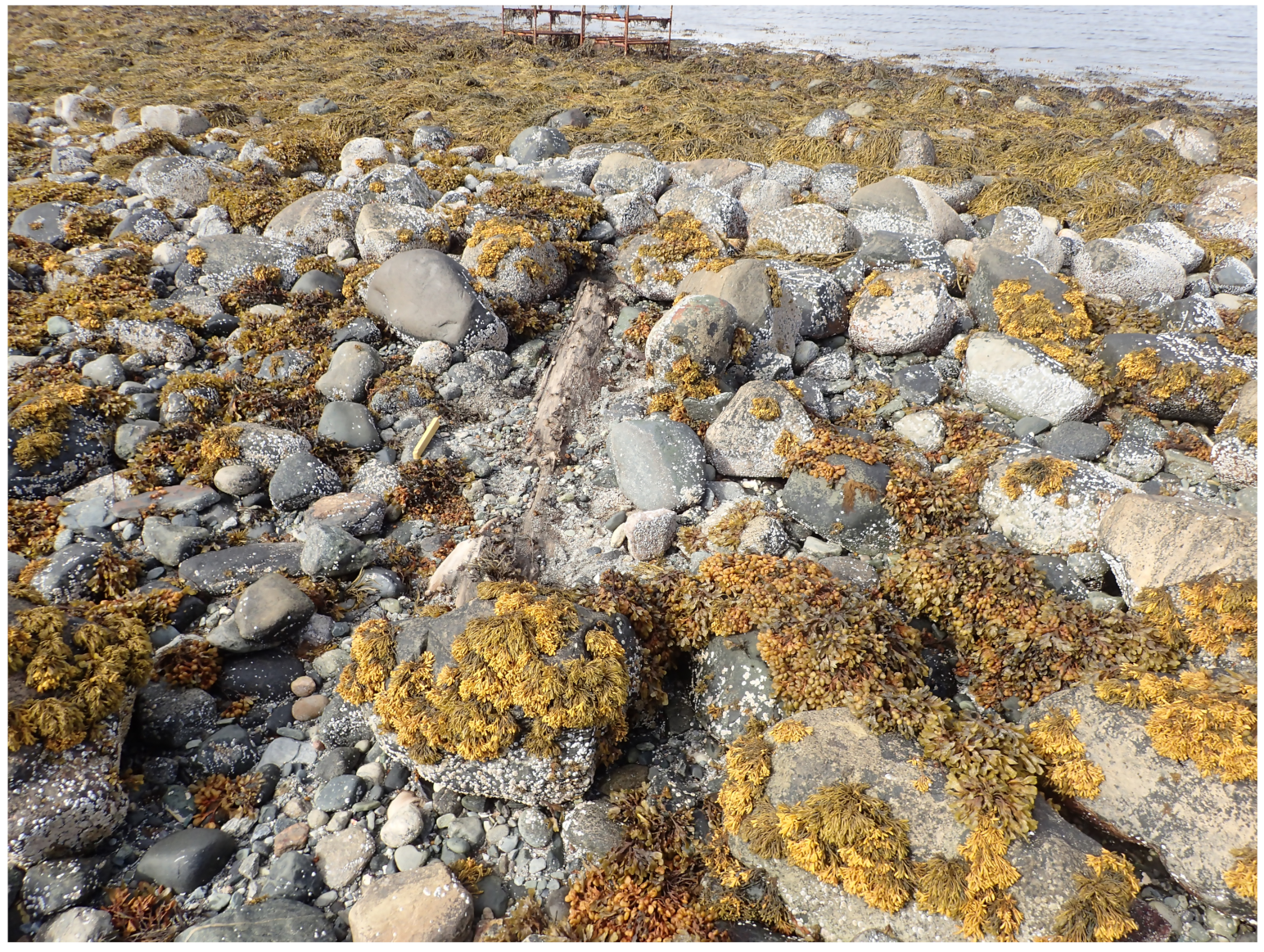
© 2020 by the authors. Licensee MDPI, Basel, Switzerland. This article is an open access article distributed under the terms and conditions of the Creative Commons Attribution (CC BY) license (http://creativecommons.org/licenses/by/4.0/).
Share and Cite
Cuenca-García, C.; Risbøl, O.; Bates, C.R.; Stamnes, A.A.; Skoglund, F.; Ødegård, Ø.; Viberg, A.; Koivisto, S.; Fuglsang, M.; Gabler, M.; et al. Sensing Archaeology in the North: The Use of Non-Destructive Geophysical and Remote Sensing Methods in Archaeology in Scandinavian and North Atlantic Territories. Remote Sens. 2020, 12, 3102. https://doi.org/10.3390/rs12183102
Cuenca-García C, Risbøl O, Bates CR, Stamnes AA, Skoglund F, Ødegård Ø, Viberg A, Koivisto S, Fuglsang M, Gabler M, et al. Sensing Archaeology in the North: The Use of Non-Destructive Geophysical and Remote Sensing Methods in Archaeology in Scandinavian and North Atlantic Territories. Remote Sensing. 2020; 12(18):3102. https://doi.org/10.3390/rs12183102
Chicago/Turabian StyleCuenca-García, Carmen, Ole Risbøl, C. Richard Bates, Arne Anderson Stamnes, Fredrik Skoglund, Øyvind Ødegård, Andreas Viberg, Satu Koivisto, Mikkel Fuglsang, Manuel Gabler, and et al. 2020. "Sensing Archaeology in the North: The Use of Non-Destructive Geophysical and Remote Sensing Methods in Archaeology in Scandinavian and North Atlantic Territories" Remote Sensing 12, no. 18: 3102. https://doi.org/10.3390/rs12183102
APA StyleCuenca-García, C., Risbøl, O., Bates, C. R., Stamnes, A. A., Skoglund, F., Ødegård, Ø., Viberg, A., Koivisto, S., Fuglsang, M., Gabler, M., Schlosser Mauritsen, E., Perttola, W., & Solem, D.-Ø. (2020). Sensing Archaeology in the North: The Use of Non-Destructive Geophysical and Remote Sensing Methods in Archaeology in Scandinavian and North Atlantic Territories. Remote Sensing, 12(18), 3102. https://doi.org/10.3390/rs12183102











